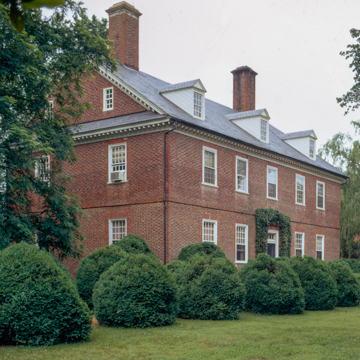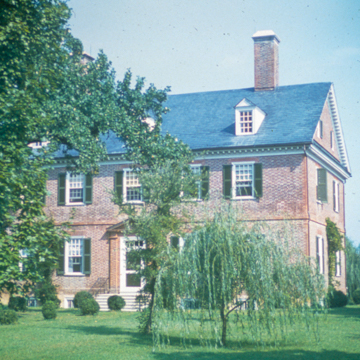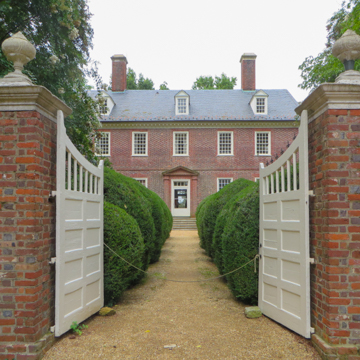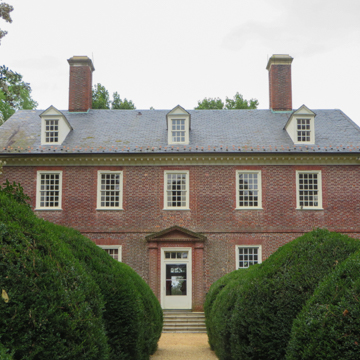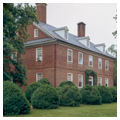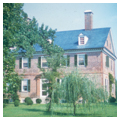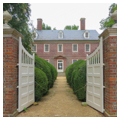Berkeley is one of the earliest of the doublepile, two-story Georgian brick mansions of the colony. It was built by Benjamin Harrison IV, the husband of Robert “King” Carter's daughter Anne. The house is imposing from its sheer mass, regularity, and the bold lines of its tall ridge chimneys and distinctive pedimented roof. The well-crafted Flemish bond brickwork is original, but the doorway piers and pediments are modern. The plan is the center-hall, ridge-chimney type. The interior was extensively changed after 1800, when the original paneling was removed. An insurance policy of 1800 identifies two brick dependencies (20 feet by 45 feet) that flanked the house on the south side, toward the river; these were replaced in the mid-nineteenth century by the buildings that survive today.
Though the architecture of the house is significant, Berkeley Plantation is best known for a remarkable string of historical events associated with it. The site was settled early, in 1619, and there the first Thanksgiving in the colonies was offered, before the loss of the Berkeley Hundred landholding in the Indian massacre of 1622 resulted in its abandonment by English settlers. Berkeley was the birthplace of a signer of the Declaration of Independence (Benjamin Harrison V, son of the builder) and of the ninth president of the United States (William Henry Harrison, grandson of the builder). During the Revolutionary War, British troops under Benedict Arnold pillaged the house. After the Seven Days Battles of the Civil War, the Army of the Potomac under General George McClellan occupied the grounds, and there the bugle call Taps was composed and played for the first time. The house has been restored in recent years.














